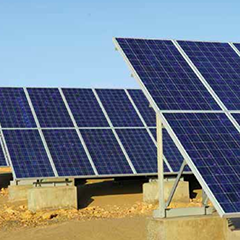As cuts to FiTs threaten expansion across Europe, we take a look further afield at The Middle East & North Africa region – a potential sleeping giant in the PV market.
MENA has amongst the world’s best conditions for solar power: abundant sunshine, low precipitation, plenty of unused flat land close to road networks and transmission grids. It is also close to Europe, where green electricity is much valued.
Furthermore, concentrated Solar Power (CSP) is a renewable energy technology which, after a period of stagnation, has started to penetrate the energy market, particularly in Spain and the United States but also in the Middle East and North Africa Region (MENA) as well as other regions of the world. To run CSP projects in MENA competitively in the short and medium term, a portfolio of different support schemes for CSP plants is necessary, including climate finance and concessional loans, revenues from solar electricity exports to Europe, and national incentives (like long-term power purchase agreements (PPA), Feed-in Tariffs, or tax rebates.
As a concrete step toward realising these strategies, a MENA CSP scale-up Investment Plan (MENA CSP IP) was prepared by the World Bank and the African Development Bank (AfDB), and endorsed by the Clean Technology Fund (CTF) Trust Fund Committee on December 2, 2009. This plan is a landmark climate change mitigation program aimed at co-financing nine commercial-scale power plants (totalling around 1.2 GW) and two strategic transmission projects in five countries of the MENA Region (Algeria, Egypt, Jordan, Morocco and Tunisia, called the MENA CTF).
The vision is for the Mediterranean MENA countries ultimately to become major suppliers and consumers of CSP-generated electricity. The MENA CSP IP is conceived as a transformational program, leading to the installation of at least 5 GW of CSP capacity in MENA by 2020, based on the 1.2 GW triggered by the MENA CSP IP. The first projects are expected to start commercial operations by 2014, and initially to supply domestic markets in MENA countries.
MENA could become home to a new industry with great potential in a region with considerable solar energy resources. If the CSP market increases rapidly in the next few years, the region could benefit from significant job and wealth creation, as well as from enough power supply to satisfy the growing demand, while the world‘s renewable energy sector would benefit from increased competition and lower costs in CSP equipment manufacturing.



























